Here at THP we are always looking to help golfers become more familiar with all aspects of equipment, including fitting and club building. That said, there are a lot of terms thrown around on the internet when it comes to those categories, and it can be very confusing for amateurs.
One such topic is shaft tipping. Long a staple of the PGA Tour and a term you might have heard on broadcasts over the years, likewise, you know the term if you have spent any length of time at online golf communities like ours.
But what exactly is it, and what are the effects? Well, lets get into it, shall we?
What is Shaft Tipping?
At its most basic explanation, the name itself tells you what shaft tipping is. Literally, you are removing material from the tip of the shaft as opposed to simply cutting to length from the butt of the shaft as is standard when installing. What is interesting is some companies like TaylorMade already tip their shafts as standard based on the weight and design of their heads and adapter.
Why trim the tip though? Tipping is common when installing a shaft into fairway woods and every manufacturer makes its tipping recommendations well known, but what about driver? Well, it is typically done in order to increase the stiffness in the tip section of the shaft in question. Essentially, it is fine tuning where some will see lower launch and spin, where others might instead have it done to alter the feel of the shaft and “tighten” things up a bit.
Something we really want to emphasize here however, is that shaft tipping is potentially a very expensive experiment, and if you are just jumping into it trying things randomly, odds are you are going to cost yourself some money along the way. It is for that reason a fitter is critical in this quest, and it is what makes centers like Club Champion and their ability to let you try a plethora of shafts in different tipping configurations invaluable.
That said, of course we put the effects of shaft tipping to the test.
Putting it to the Test
To see just what the effects of tipping driver shafts can be, I took three identical brand-new Graphite Design Tour AD IZ 6X shafts and set them up to play in the Cobra LTDx driver head at standard 9.0 degrees with a 45” playing length. If you missed our video breaking down all of the Graphite Design Tour AD shafts, you can find it here. All three shafts were gripped with identical grips as well. The only thing differentiating them is that before butt trimming to length, one was tipped ½” and the other 1” with the last staying untipped.
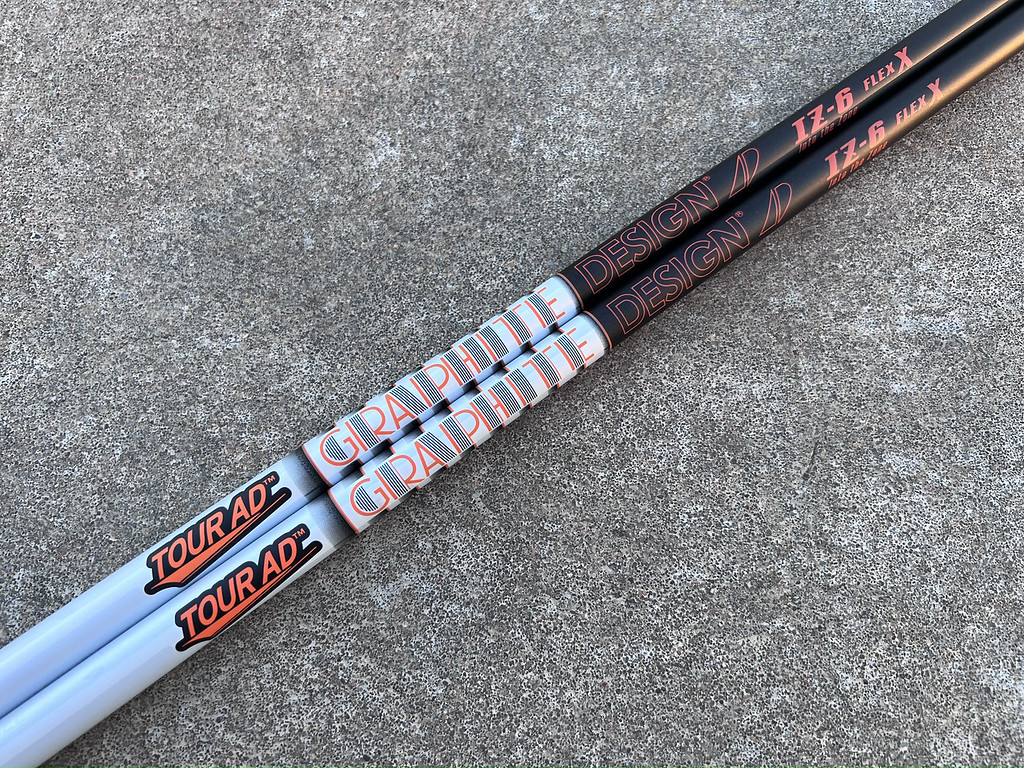
As mentioned, these were all 6X shafts, after taking the shafts to playing length but prior to install I did run the CPM on them with untipped coming in at 281, ½” at 284, and the 1” tip moved the shaft to 288 CPM. While the numbers nerds of us will undoubtedly dive into those more, the gist is there was a measurable tip stiffness difference as the tipping increased. Getting into it, the data below shows five well struck shots for each setup as recorded on a Foresight launch monitor, I tried to throttle things back and keep it as consistent as possible without being a robot to let the story of what I saw be shown:
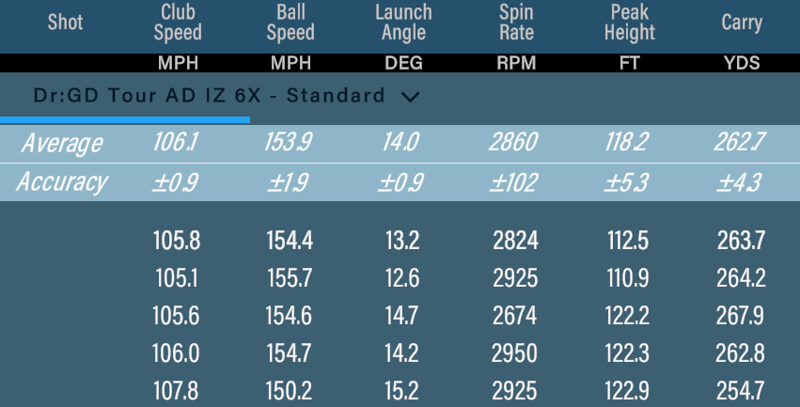
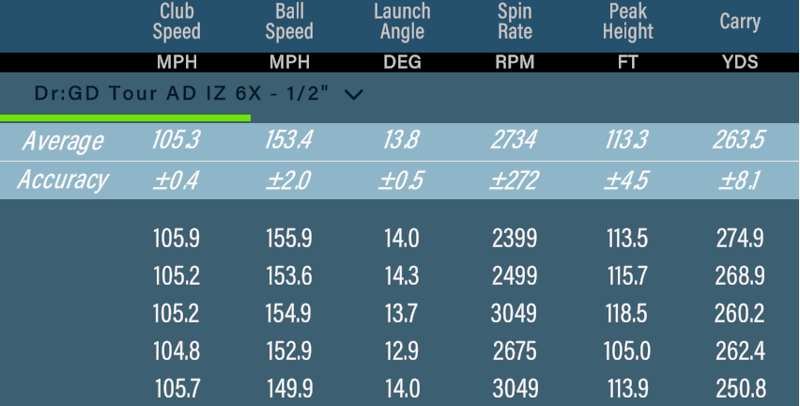
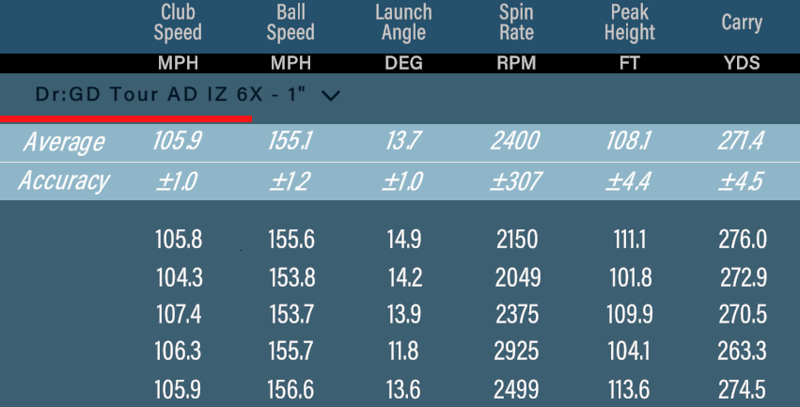
As you can see, I clearly responded better and more efficiently to the Graphite Design Tour AD IZ 6X at 1” tipping, not that the other numbers weren’t playable, but there was a clear comfort there as launch and spin came down while the flight also flattened out into a more piercing trajectory. Not to mention, I found the 1” tip to have better dispersion with a tighter pattern.
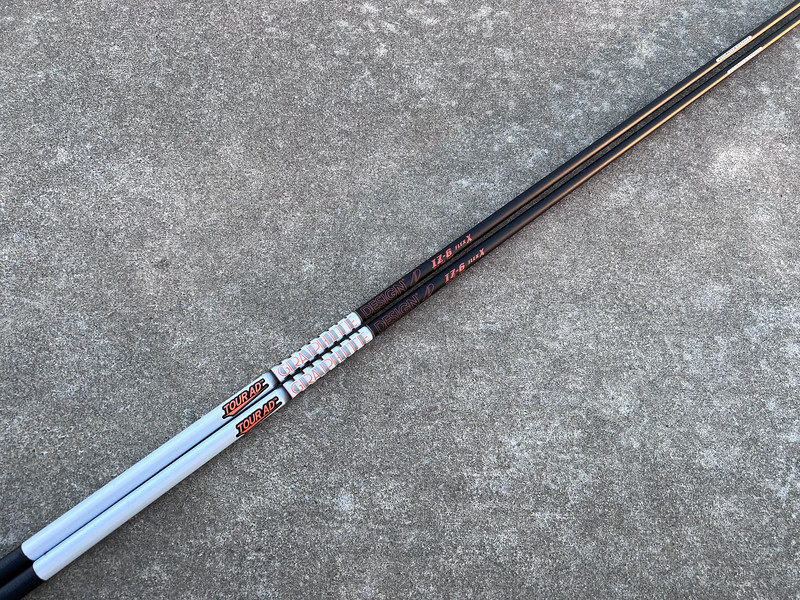
Looking at the overall picture, seeing about a 400 RPM difference from an inch of tipping was pretty eye opening for me, though the numbers change is fun to look at, the bigger story for me is about feel. I had played the Tour AD IZ 6X in the past, and it didn’t jive all the way with me, while the Firm, Medium, Firm+ profile on paper should have fit well, things were still just a little loose. I could tell immediately in warm up swings that the feel had been noticeably altered for me and that seemed to let me mentally get more confident through the zone, and I believe the numbers above show that.
Parting Thoughts
With all the above in mind, I urge you to not just run out and start tipping your driver shafts. As mentioned, professional fitters should be consulted if you want to avoid some potentially pricey experiments.
The reality is there is no hard and fast rule as to how tipping a shaft could impact your experience or performance. While some will see the spin and launch drops like I did, others could see the opposite depending on the profile of the shaft being tipped, as well as the way they deliver the club to the ball. Although personally the change in stability/feel at the tip through the swing jumped up and smacked me directly in the face, as with anything in golf we all have different levels of sensitivity to such things. Remember also, that “tighter” and “stiffer” also doesn’t mean more accurate for everyone.
Hopefully, this helps give a better understanding to just what shaft tipping is, after all, helping golfers find clarity in their equipment is always a primary goal here at THP. For more information on the shafts used in this test, check out their website at www.proschoicegolfshafts.com.
The post Shaft Tipping Explained appeared first on The Hackers Paradise.